Now is a great time to sell products or services online.
Our report, “The Future of Ecommerce Is Now: Industry Insights for 2023 & Beyond,” forecasts continued growth globally.
It also highlights the great potential for success with ecommerce businesses in the U.S. and international markets.
But what should you sell?
Here are nine profitable ecommerce business ideas to help you answer this question.
1. Become an Affiliate Marketer
If you have a popular blog or are an authority in your niche, turn your platform into an ecommerce business with affiliate marketing.
An affiliate marketer promotes and sells a brand’s products or services in exchange for pay or commission.
For example, photography YouTuber Faizal Wescott makes high-quality vlogs and “how to” guides for fans of street photography.
In the description of each video, he includes a link to his gear so viewers can buy the same kit.
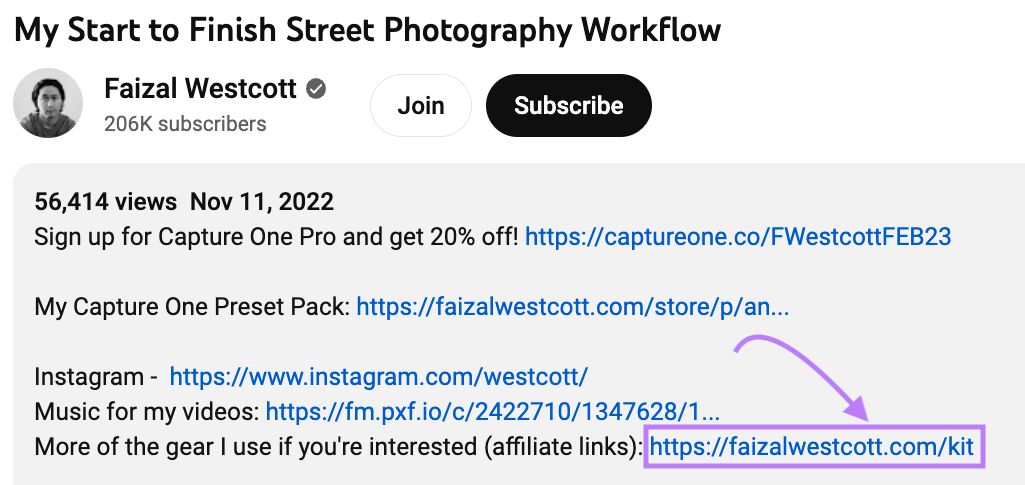
The link takes people to a page on Faizal’s website with affiliate links.

Faizal gets a small commission if a visitor buys a product using one of these links. Depending on the affiliate program, this could be anything from a few cents to several dollars per order.
The size of your blog audience and the commission you get from each sale will affect how much you earn.
Affiliate revenue is a proven way for brands to leverage your profile to increase sales—and for you to earn extra income.
And the best part?
You don’t have to fulfill orders, ship products, or handle customer service.
Partner with different brands in your niche to turn affiliate marketing into a profitable business. This lets you diversify your income and ensures you’ll still have money coming in if an affiliate program shuts down.
For example, if you’re a fitness blogger with an emphasis on running, join a program for a company that sells running shoes, another that offers gear, and another that sells nutrition products.
Drive traffic to partner websites by including links in:
Say you wanted to conduct keyword research to create affiliate content about running shoes. First, you’d open the Semrush Keyword Magic Tool, type in “running shoes,” and click “Search.”

You’ll get a list of suggested keywords to choose from, like this:
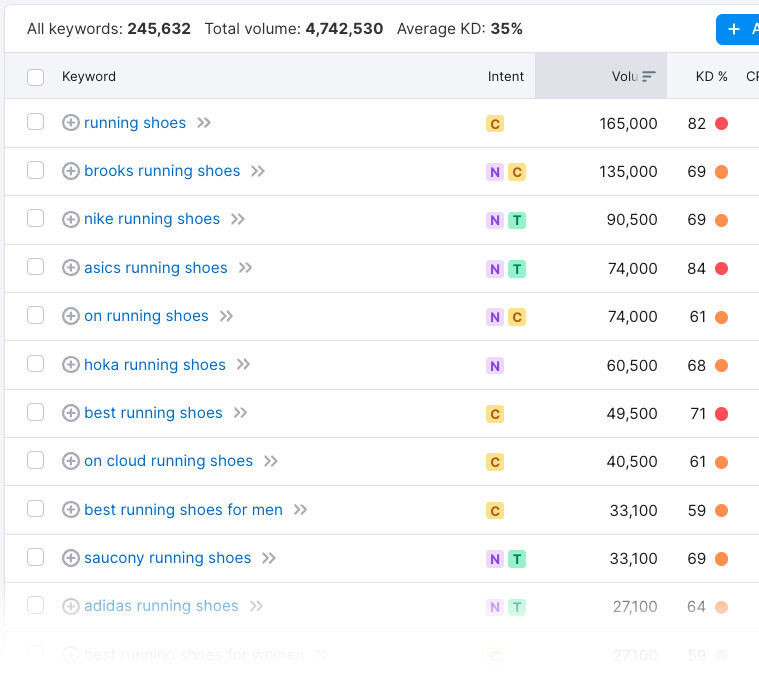
If you want to filter out any brand names, click the eye icon next to that name on the left-hand menu.
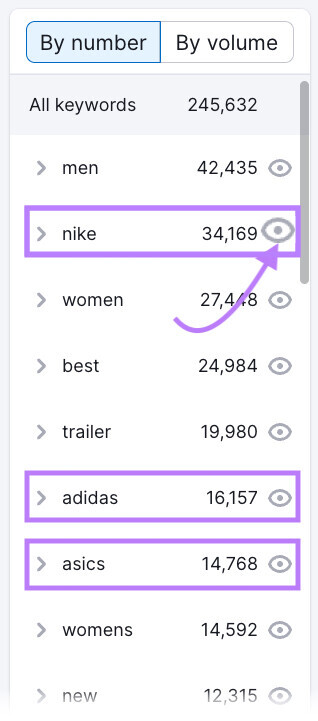
Once you’ve done that, look for keywords with a lower keyword difficulty (KD). This means less competition from other websites for this keyword, but still enough consumer interest to generate website traffic.
Compile your list and save it for later in Keyword Magic Tool, or export it as an .XML or .CSV file.
2. Sell Online Education Courses
Have a topic you’re highly knowledgeable in or a marketable skill? Monetize it by teaching others what you know.
With over 220 million users enrolled in online courses, according to Class Central, this market has massive potential for ecommerce entrepreneurs. In fact, by 2030, the e-learning market is projected to be worth $602 billion.
Creating and selling an online course lets you tap into this growth. And don’t worry if your skill is niche. There’s likely an audience looking to improve at whatever you’re offering.
For example, Mark Dawson’s Self Publishing Formula has helped thousands of indie authors learn how to sell their books and reach more readers. He opens sign-ups for each of his courses twice a year to help manage intake.
His ‘Ads for Authors’ course sells for $849. If he sold just 10 courses, he’d make $8,490.
Learning platform Udemy has over 210,000 courses across hundreds of categories, from parenting and positive thinking to marketing and mindfulness.
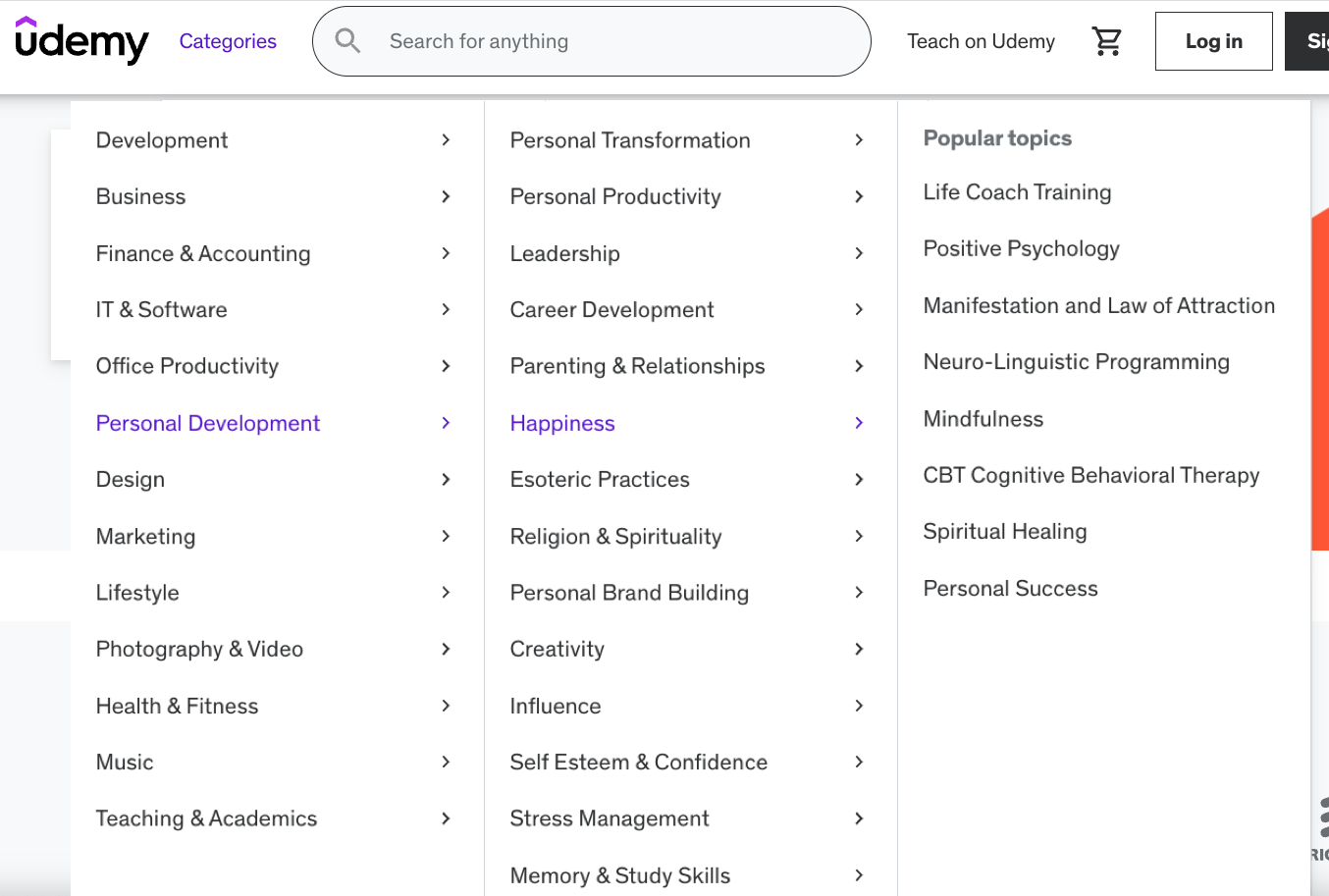
To find the right course topic for you, make a list of subjects you’re passionate about. Passion is what keeps teaching engaging and stops you from getting bored.
Combine your passion with skills and experience. What do you do well and have expertise in—professionally or otherwise?
When you know what you want to teach, research how existing course creators structure and market their courses. For instance, say you want to teach iPhone photography. Go to a platform like Skillshare and search for a course on that topic.
To get inspiration for your own course, look at what’s included in the best-selling courses. Check out the providers’ social media channels and read course reviews.
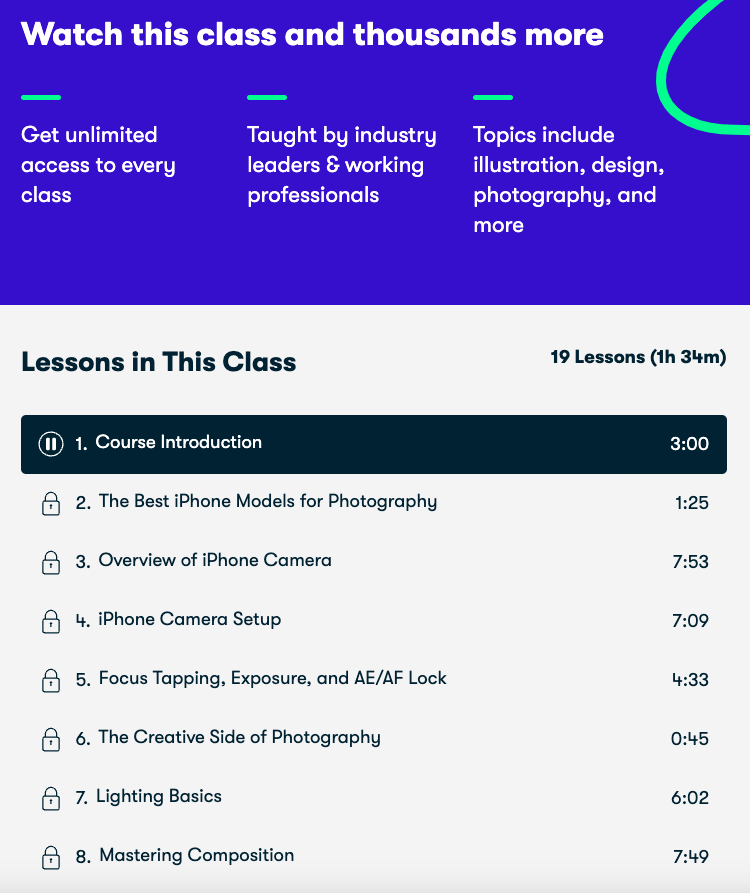
Get a feel for what customers want to create an engaging and helpful course that will teach them a valuable skill. If you have a website and an existing audience, you already have the platform for marketing your course.
However, if you’re building from scratch, an e-learning platform is the quickest way to create and sell your skills.
Here are some platforms to consider:
Each platform has resources to help you create and run successful courses.
3. Launch a Dropshipping Business
Dropshipping is an ecommerce fulfillment method that allows you to sell products without buying, stocking, or shipping them.
Here’s how it works:
- Pick an ecommerce product to sell
- Partner with a dropshipping supplier
- Sell products on your ecommerce site
- When you receive an order, the supplier ships the product to the customer
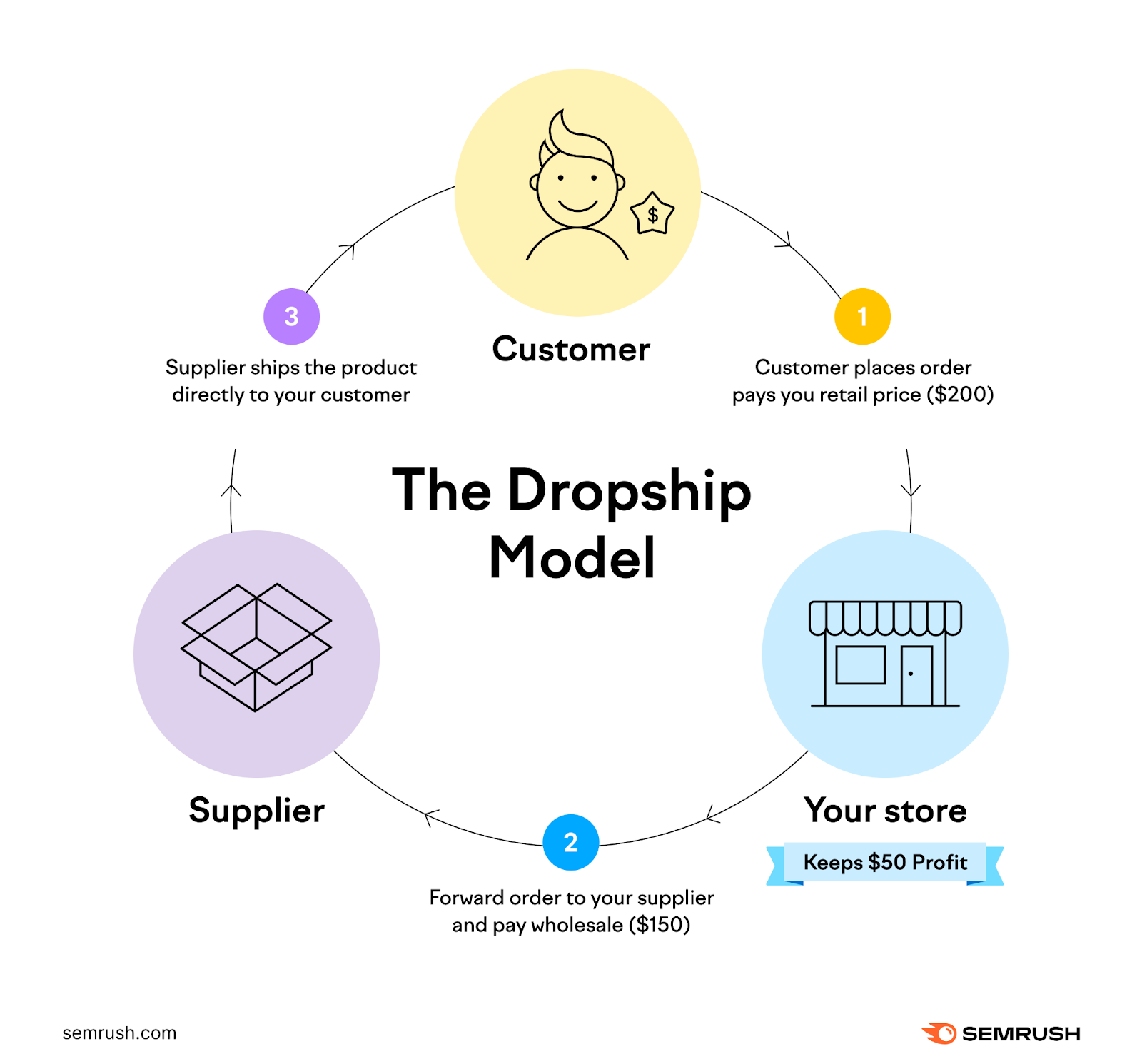
You only pay for the products you sell. Better still, you set the price for those products. So, you can mark up the supplier’s price to make a profit.
It’s a low-investment and beginner-friendly way for new business owners to make money online.
Take Malaysian entrepreneur Tze Hing Chan, for example. During the pandemic, he started his dropshipping business by selling bubble tea plush toys. In his first two months of business, he made $19,000 in profit.
The trick to successful dropshipping is to find products that sell.
According to Shopify research, the most profitable niches are:
- Health and personal care
- Wardrobe and accessories
- Kitchen and grocery
- Home and bedroom
- Office products
- Tools and home improvement
- Camera and cellphone accessories
- Gaming
- Car accessories
Need help finding a profitable product?
Shopify Finder will speed up the research process and help you find the best products to sell in your online store. This tool lets you search for products using a keyword or domain and get information on categories and prices.
You can also find and validate popular products by searching trends and keyword volume.
When you know what you want to sell, you can partner with a dropshipping supplier and connect your ecommerce website to a provider.
Here are some leading dropshipping sites to start your search:
4. Monetize Professional Services
If you’re skilled in a particular area, turn it into a business. Use your expertise to help businesses solve problems and fill skill gaps.
For example, freelance writer Elise Dopson turned her writing skills into a six-figure business by creating blog content and long-form articles for retail, ecommerce, and martech clients.
How?
She credits three things:
- Writing guest posts to build a portfolio that appealed to target clients
- Creating workflows to work more efficiently
- Building relationships with other creatives to learn and get referrals
If you’re considering starting a freelance business, you have many options. You can monetize your skills in all kinds of areas:
- Content writing or copywriting
- Translation
- Search engine optimization (SEO)
- Web design and development
- Photography
- Social media marketing
- Project management
- Virtual assistant
As a freelancer, you can sell white papers, ebooks, photography products, graphic designs, and various marketing services on an e-commerce site. You don’t necessarily need experience or qualifications to be successful. But you should have knowledge and passion.
Choose a niche that interests you. If you’re passionate about what you do, you’ll be able to build a brand that attracts your ideal clients and helps you stand out from the competition.
Start marketing your services to clients quickly by creating a profile on a freelance marketplace like Upwork, Fiverr, or 99designs.
But don’t rely solely on one platform.
Marketplaces are crowded, and it can be a lot of work to win jobs. So, it’s important to market yourself in other ways. Create a website and social media accounts for your services and use these as platforms to share your expertise. This will help you build authority in your niche.
Take social media marketer and business owner Daniela Schrittenlocher for example. She regularly shares simple marketing tips with followers on Instagram.
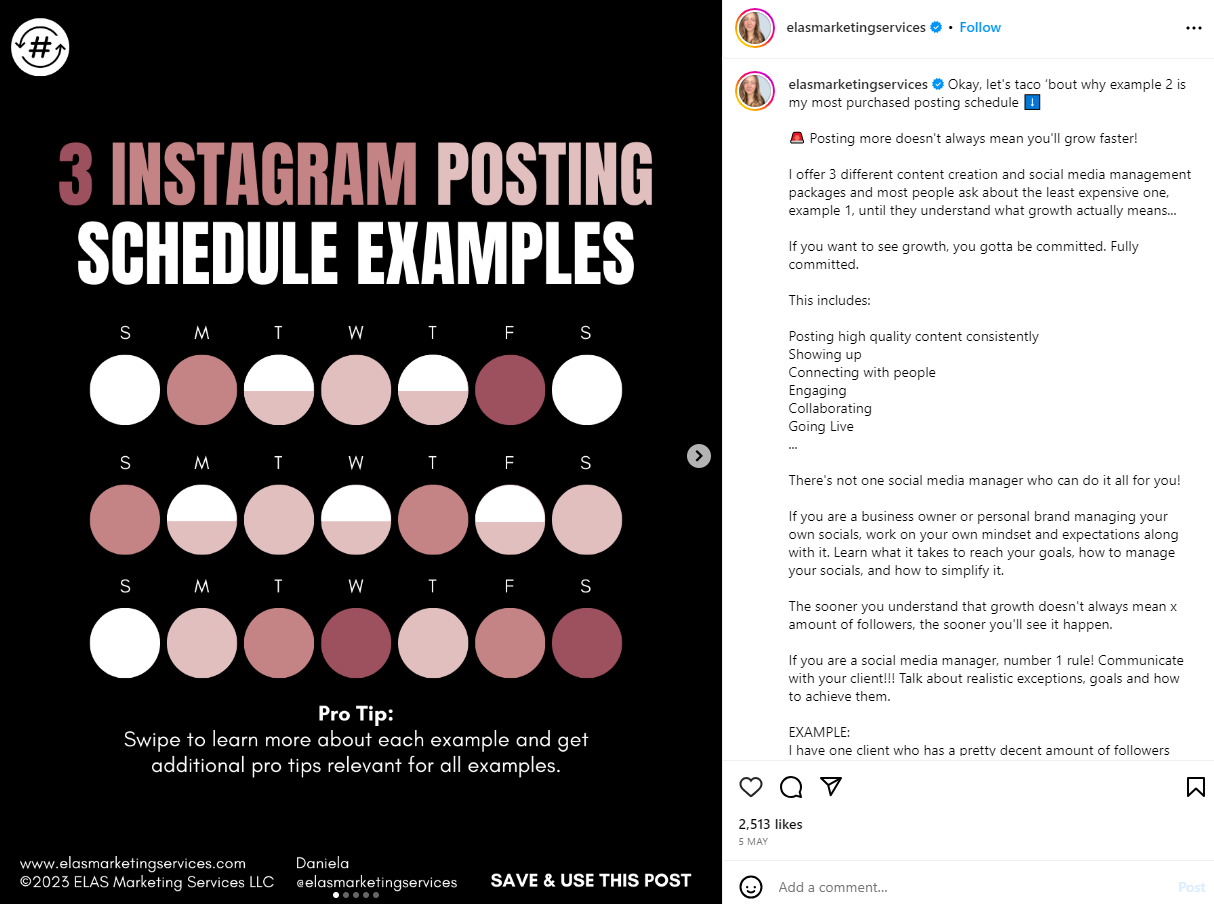
The account lets Daniela showcase her knowledge and helps potential customers solve problems. More importantly, it builds relationships and trust.
When Daniela’s target audience decides they need help with social media marketing, her business will be high on the list.
The more present you are to your target audience, the easier it is to stay top of mind. And earn a steady stream of clients.
Further reading: How to Get Started As a Copywriter in 2023.
5. Sell Trending Products on Marketplaces
Marketplaces let you sell items online without setting up an ecommerce store. They also get your products in front of an established audience.
A report by Wunderman Thompson Commerce (WTC) shows that 71% of the search process happens online, with 31% of shoppers turning to online marketplaces like Amazon.
Our research shows marketplaces also dominate the ecommerce space when it comes to monthly views.
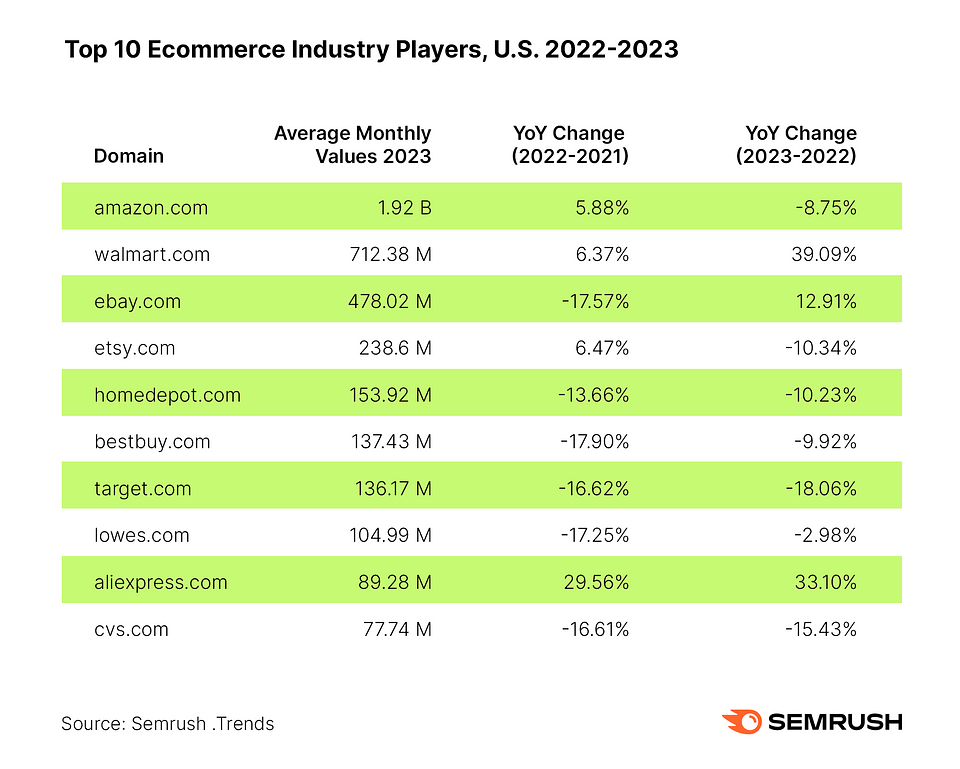
On Amazon, these views translate to sales.
Our research also shows that 67% of people who visit Amazon.com check out a product page. Of those visits, 12% result in customers adding a product to their cart and 8% end with a purchase.
This is compared to a 2% to 3% average conversion rate for most online retailers.
Note: Marketplaces have seller fees and subscriptions for using their platforms. These can cut into your profit margins. So, it’s a good idea to sell products on your own website alongside your listings to diversify your income.
To capitalize on this purchase-ready audience, sell products that are popular with customers.
You can use Amazon to research profitable items.
Go to Amazon’s homepage and click “All” (the hamburger icon with three horizontal lines).

Choose a department that matches what you want to sell.
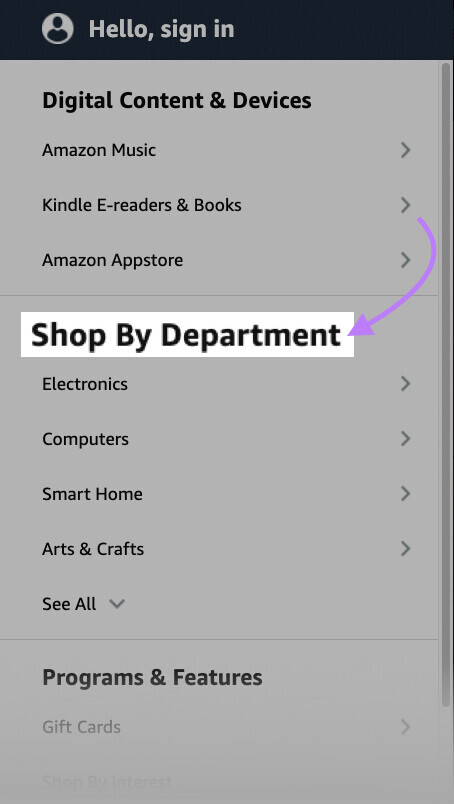
Click “Sort by,” then “Best Sellers” to filter your search.

If you already have an Amazon account, you can also find trending products by checking out “New Releases” and “Movers & Shakers.”

Semrush’s Product Research for Amazon tool can also help you find trending products with up-to-**** information about product demand and intuitive calculators to help you work out your profit windows.
Once you’ve found a product for your online business, decide how and where to source it.
Common options include:
- Dropshipping: Best if you don’t want to stock or ship items
- Bulk sourcing from wholesalers: Best if you want to sell various products but not manufacture them
- Direct sourcing from manufacturers: Best if you want to create branded products
- White labeling: Best if you want to create your own brand from generic products
- Making items yourself: Best if you want to create products and sell them via a fulfillment service like Fulfillment by Amazon (FBA)
But selling a trending product doesn’t automatically equal big sales. To get conversions, create listings that convince users to click on your product over a competitor’s.
Research top sellers to learn which keywords they use and how they describe product features and benefits.
You can also plug keywords into Semrush’s Amazon Accelerator to find top competitors. And get key listing insights, including pricing, rankings, and profitable keywords. Use this information to create listings that drive traffic.
6. Start a Subscription Box Business
Subscription ecommerce sales are predicted to exceed $38 billion in 2023. This means they can be a great ecommerce business idea if you want recurring revenue.
Subscription boxes give customers set products every week, month, or quarter for an ongoing fee.
For example, Blue Apron ships out weekly meal boxes with ingredients and recipes for users to cook at home.
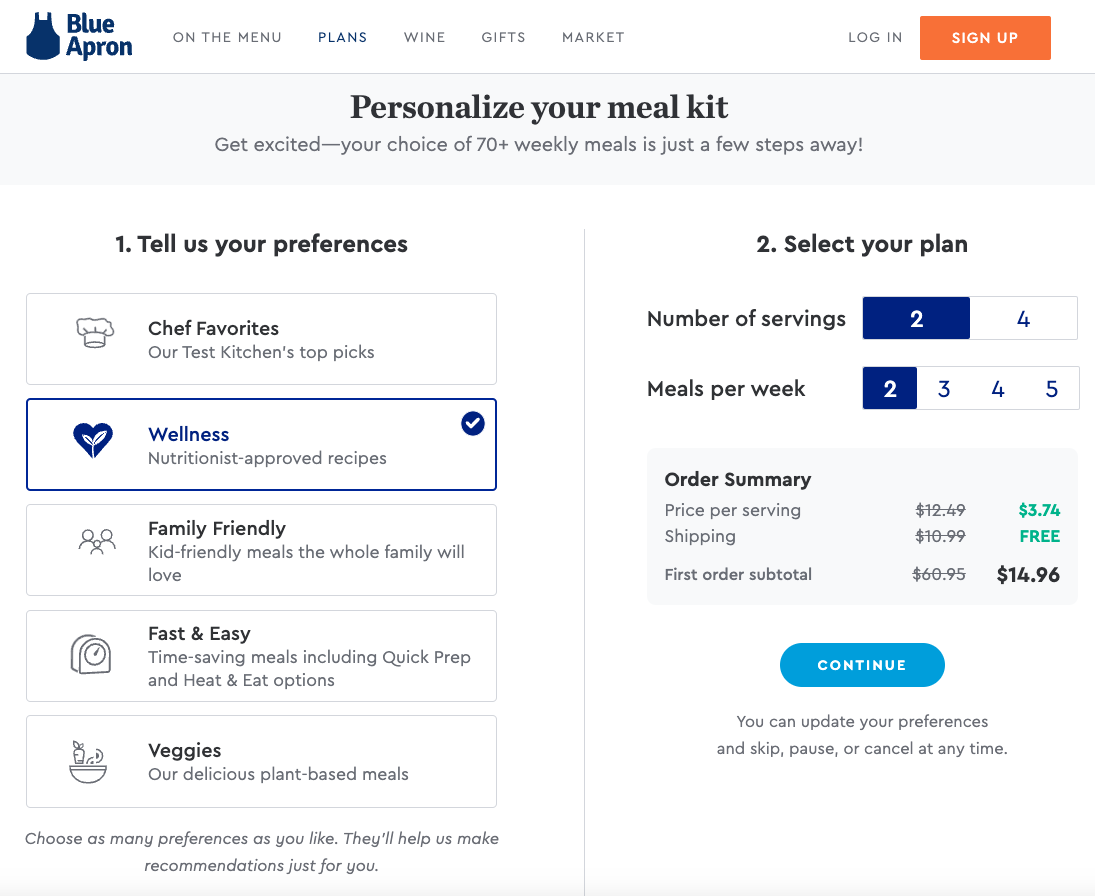
People **** subscription boxes because they encourage them to try new things, and they enjoy receiving items in the mail.
But they’re also popular for their convenience and predictability. Customers know exactly what they’re getting and how much it costs. And this benefits your business.
As a report by global management consultancy McKinsey & Company notes:
Not only can the subscription model drive greater average spend, launch a virtuous cycle of using data to better serve consumer needs, and inspire loyalty, it provides value to consumers who appreciate the convenience, novelty, and curated experiences.
You can offer subscription boxes for just about anything that’s ideal for repeat purchasing.
If you want a safe bet, choose an established market.
According to Statista, the top service types are:
- Groceries, food, and drink
- Personal care products
- Household products
- Clothing
- Toys, games, and books
- Pet products
Whatever type of subscription box you offer, win customers by providing value.
McKinsey & Company’s research shows the biggest subscriber motivations are value, high-quality products, and variety.
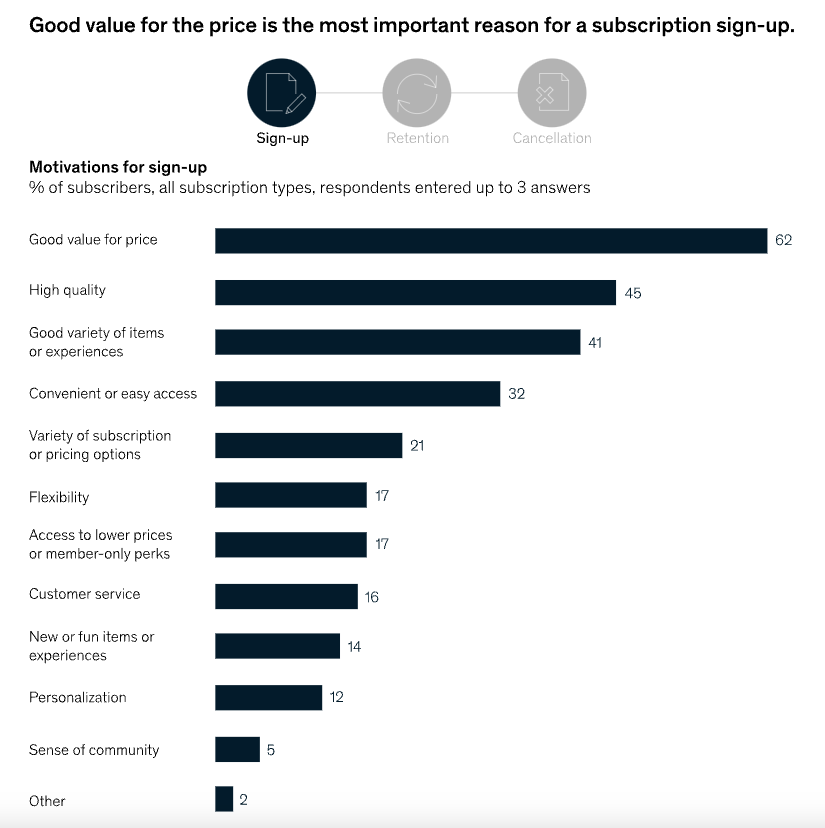
Image Source: McKinsey
Deliver the right combination of offer and cost to engage customers. Consider offering different packages or subscription levels to cater to a variety of subscribers.
For example, FabFitFun offers annual and seasonal monthly plans. You can also customize your box and swap any products you don’t want.
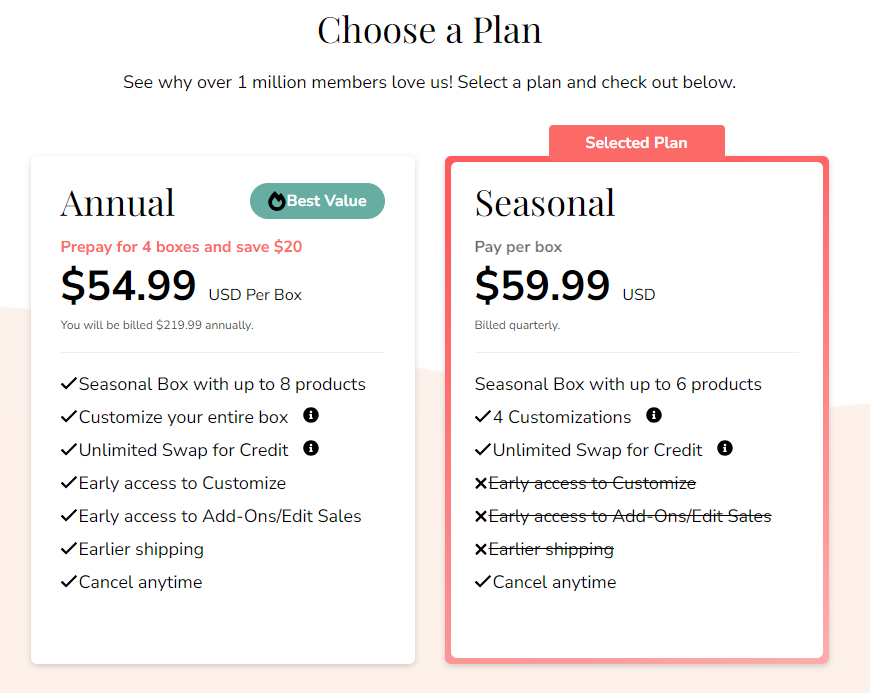
It’s a great way to keep customers engaged, happy, and, most importantly, subscribed.
7. Sell Print-on-Demand Merchandise
Print-on-demand involves putting your designs onto products and selling them under your brand.
Like dropshipping, it’s a low-risk ecommerce business model for startups and small business owners because you only pay for the products you sell.
If you want to know how to start an ecommerce business without money, a print-on-demand platform is the way to go since there are no upfront fees. The print-on-demand company handles fulfillment, so you don’t have to invest in printing equipment or stock inventory.
However, you will need to either make the designs yourself or set a budget to hire a designer.
For artists or designers with an active audience, print-on-demand is a great way to monetize your work without an upfront commitment as well.
You can use it to print a wide range of merchandise:
- T-shirts
- Hoodies
- Tote bags
- Hats
- Mugs
- Stickers
- Art prints
For example, DUMBCLUB uses Printful to print its designs on apparel and stickers and sells them on an ecommerce site.

But what if you don’t have your own designs?
Commission artists to create them for you using a budget-friendly platform like Upwork or Fiverr. You can also look for independent or local artists on Instagram and TikTok.
To get started with print on demand, partner with a supplier such as:
All of these suppliers make it easy for you to upload designs and share mockups on your website. They also integrate with popular ecommerce platforms like Shopify, Wix, and WooCommerce.
Further reading: A 6-Step Guide to Social Media for Small Businesses.
8. Sell Secondhand Items
If you enjoy treasure hunting at thrift stores, antique shops, and yard sales, turn this hobby into an ecommerce business.
Thrift store reselling is the buying and selling of secondhand items and niche products such as:
- Clothing
- Jewelry
- Books
- Electronics
- Baby goods
- Sporting goods
- Furniture
- Antiques
- Art
And it’s a market with a high growth rate. Revenue is predicted to reach $350 million by 2027, according to research by ThredUp.
The popularity is driven by changes in shopping habits. People are increasingly eco-conscious and more deliberate about what they buy.
Selling thrift items promotes sustainability and recycling, keeping products out of landfills.
These ideals drive people to choose sites like eBay, Facebook Marketplace, and Depop over retailers. And sellers are thriving because of it.
Take Australian Depop seller @avenuevintage for example. He started selling secondhand clothes as a hobby during his university years.
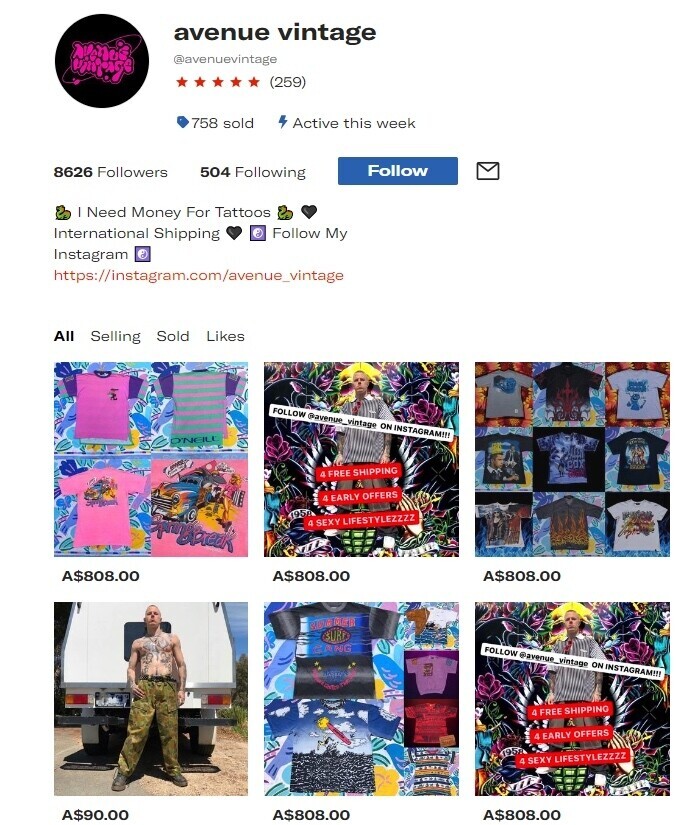
Rapid growth in sales and having items featured in Depop’s “Explore” and “Meet The Sellers” sections allowed him to scale up and become a full-time Depop entrepreneur.
To make a profit from your finds, research products online before buying. Check the quality of goods and look on selling sites to see the average sale price.
If the item is worth more than you paid, you have a good chance of making a profit.
Here are some popular places to sell secondhand goods:
9. Create and Sell Eco-Friendly Products
Eco-friendly products are items made using sustainable materials and ingredients. They follow strict standards in manufacturing, packaging, shipping, and disposal to be less harmful to the environment.
Like thrift goods, selling eco-friendly items taps into ethical consumerism.
According to a study by global pricing and strategy consultancy Simon-Kucher & Partners, 85% of consumers have become “greener” in their purchasing in recent years. And 60% say sustainability is an important factor in their buying decisions.
“Eco-friendly” is a broad term, so there’s no shortage of products you can sell. You might consider:
- Natural products
- Ethical fashion
- Personal care products
- Skincare and beauty products
- Pet food and accessories
- Health and well-being supplements
- Reusable storage
- Wooden toys and games
- Renewable energy tech accessories
To find the right products, consider the environmental impact. Eco-friendly goods vary in sustainability, energy efficiency, and carbon footprint.
Align your choices with what’s important to your business.
For example, you might focus on sustainable clothing materials or green energy tech gear. You’ll likely also want to consider ethics. Eco-friendly products are often tied to ethical production, such as fair wages, working conditions, and responsible sourcing.
These decisions will impact your business plan, branding, and marketing.
For example, clothing company People Tree puts sustainability at the forefront of its brand communications. Its purpose-driven approach has helped the brand grow a loyal fashion-conscious customer base that regularly champions the company.
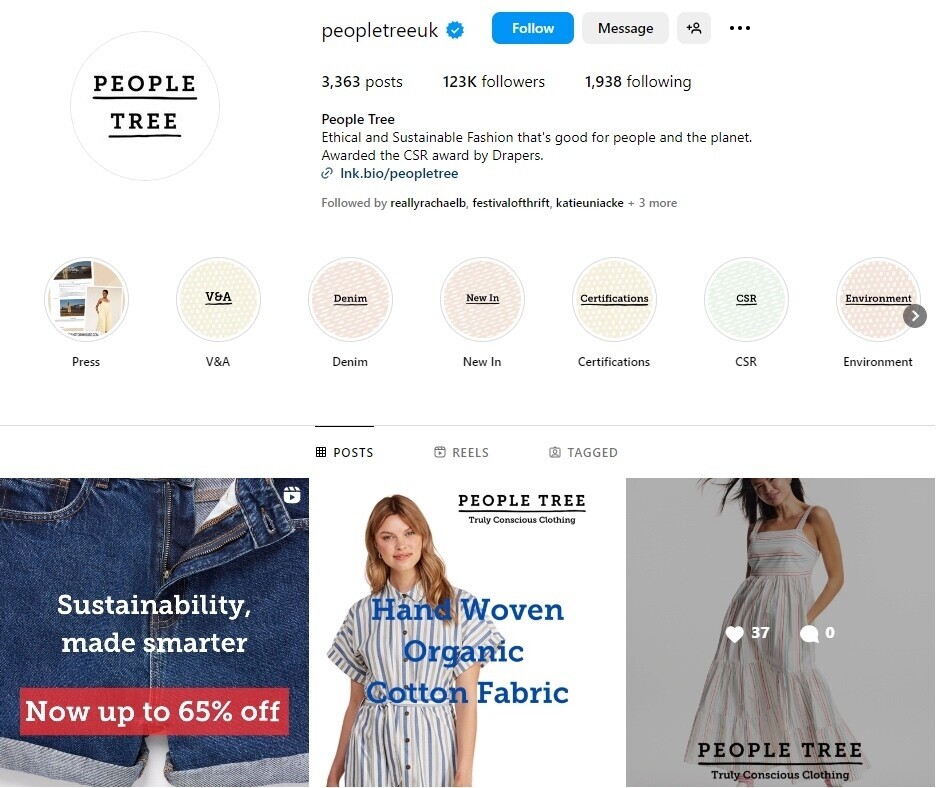
You can do the same by researching consumer reports and trade publications to find high-demand products in your industry.
When sourcing products, consider certifications. Products certified as organic, chemical-free, or sustainably sourced will help you maintain a high standard. When marketing your product, explain how it falls into the eco-friendly category in detail to attract eco-conscious customers.
How to Validate Your Ecommerce Business Idea
Before you commit to any of these ideas for ecommerce business owners, you’ll want to ensure there’s a demand for it. Otherwise, you risk investing in something people won’t buy.
Here are three ways to validate a product or business niche.
Search Popularity on Google Trends
Google Trends tracks what people are searching for and translates the data into trends. So, it’s a great way to find out if there’s interest in your idea. If interest is low, demand might also be low.
To get started, go to Google Trends and type in your keyword.
For example, say you want to sell water bottles.
Type in “water bottle,” and Google Trends will show you “Interest over time.”
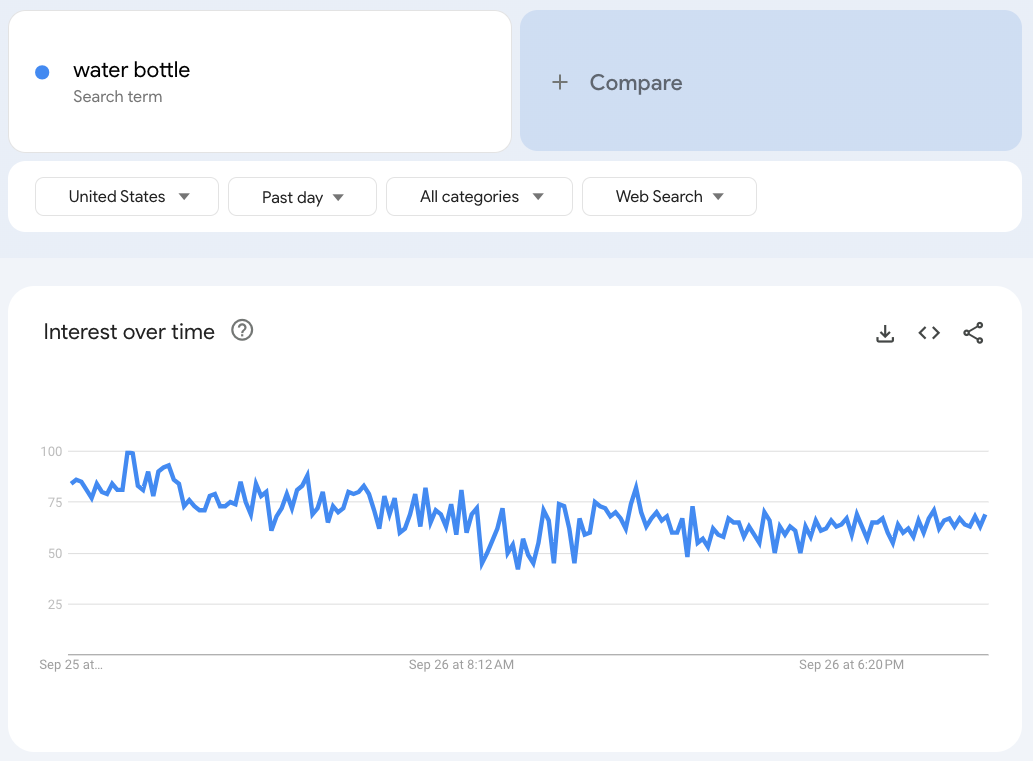
Filter your search by region, time frame, category, and search.

For example, if you customize your region to “Worldwide” and the time frame to “Past 5 years,” you can see interest in water bottles has steadily increased.

This tells you there’s demand.
You can also compare additional search terms. Here, you can see that “reusable water bottle” and “stainless steel water bottle” are far less popular keywords.
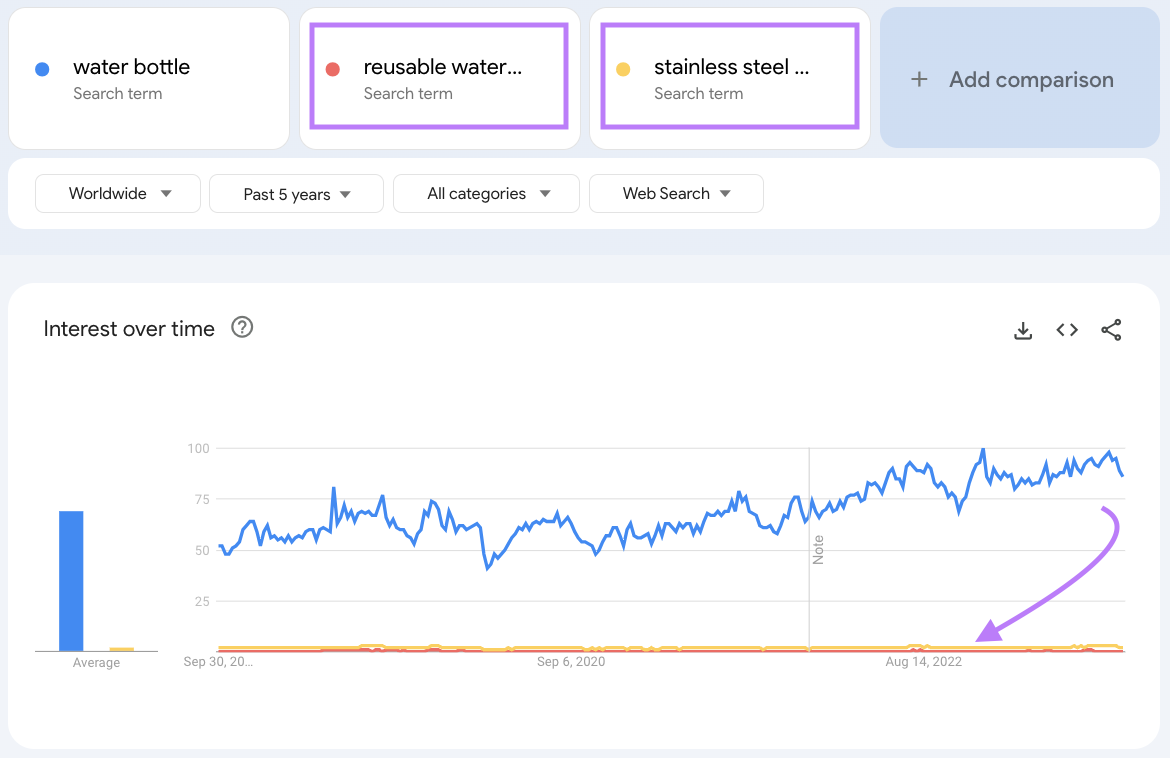
You can also look at a breakdown of interest by region. This can help you identify popular markets.
Interest in the term “water bottle” is most popular in Nigeria and Belgium. These could be profitable places to market and ship products.
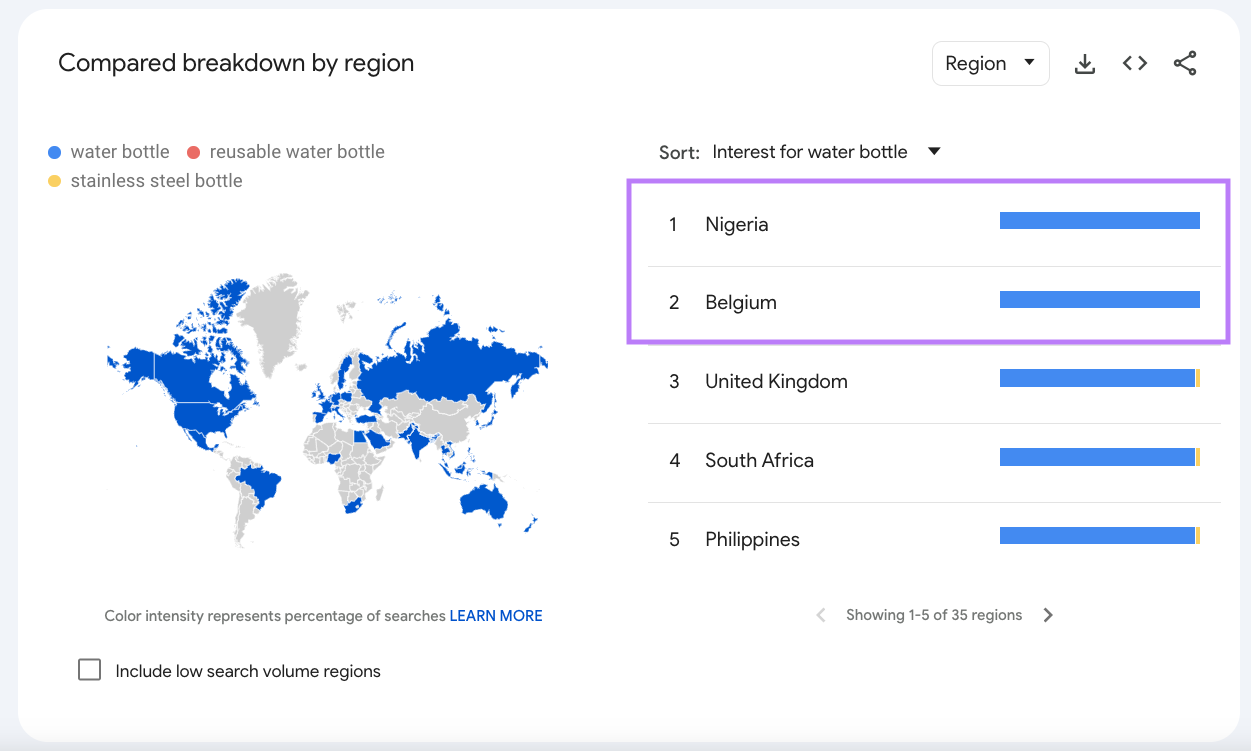
Finally, Google Trends shows you “Related queries.” These are terms that people searching for your keyword also use.
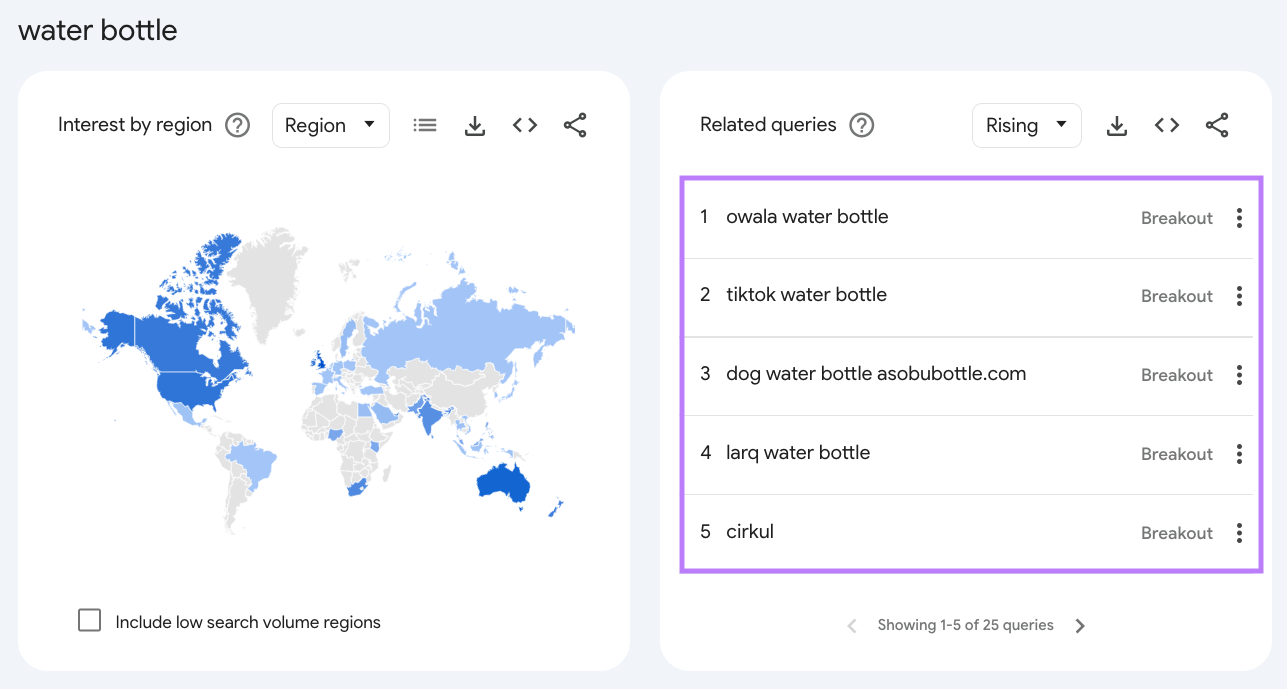
Use related queries to find new keywords to target and identify other popular products.
In your search, you can see that “owala water bottle” and “larq water bottle” are common queries. These might be potential items to dropship on a marketplace or online store.
Further reading: What Is Google Trends & How to Use It.
Identify Demand with Semrush’s Keyword Overview
Semrush’s Keyword Overview provides key metrics for any keyword. Use it to learn more about search volume and competition level.
To get started, enter your keyword and region. Then, hit “Search.”
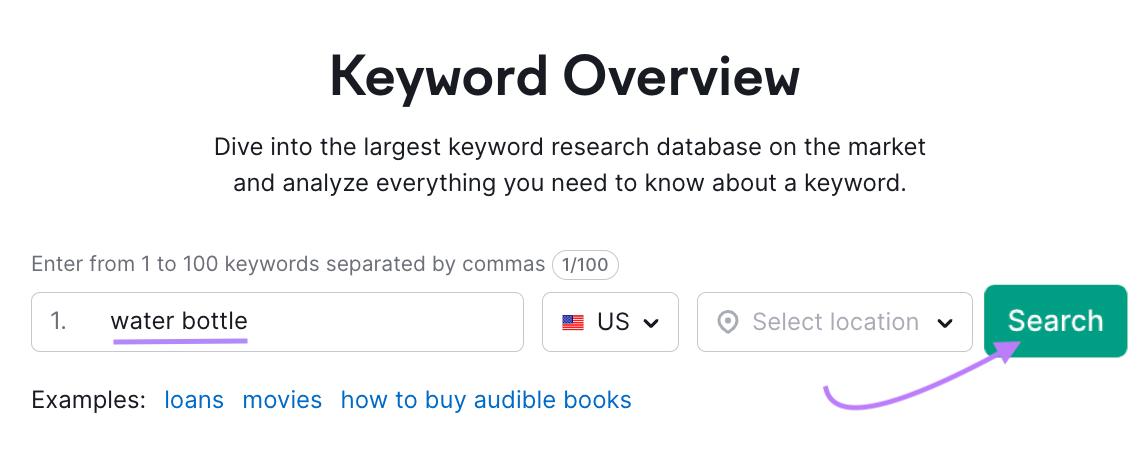
Keyword Overview shows you volume (number of monthly searches) and trend (12-month interest in your keyword).
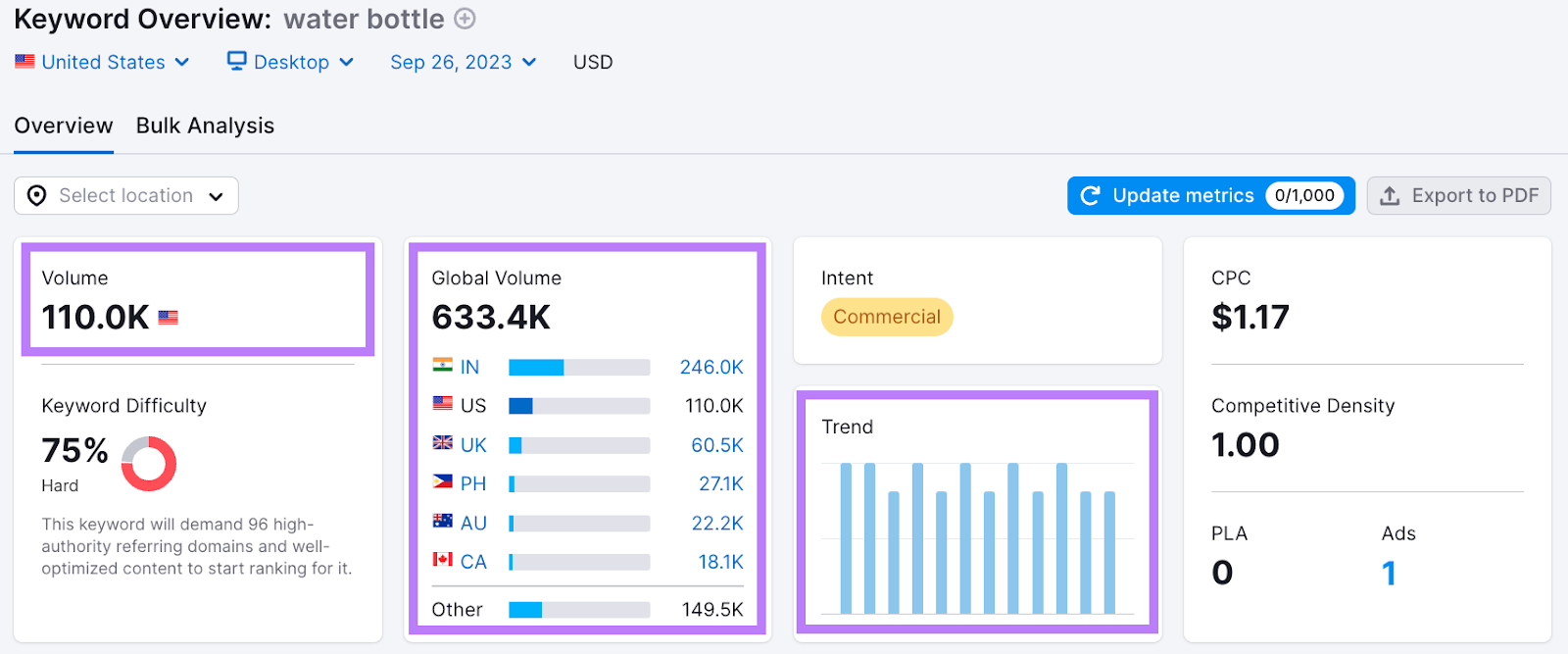
High search volume and interest tell you there’s demand.
Use the “Keyword Ideas” section to find keyword variations. This will help you discover other popular products and keywords to target in digital marketing campaigns.
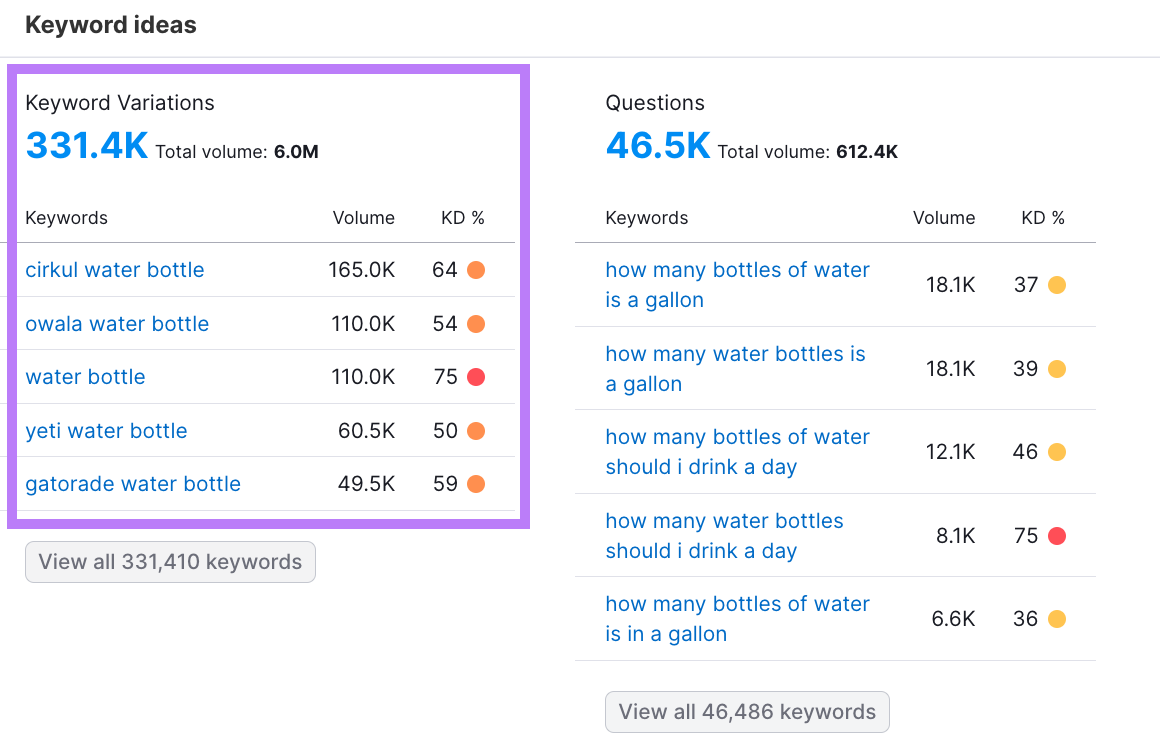
You can also use SERP (search engine results page) analysis with SERP tracking tools to research the top-ranking websites in your space, get position-tracking alerts, and research domain rankings.
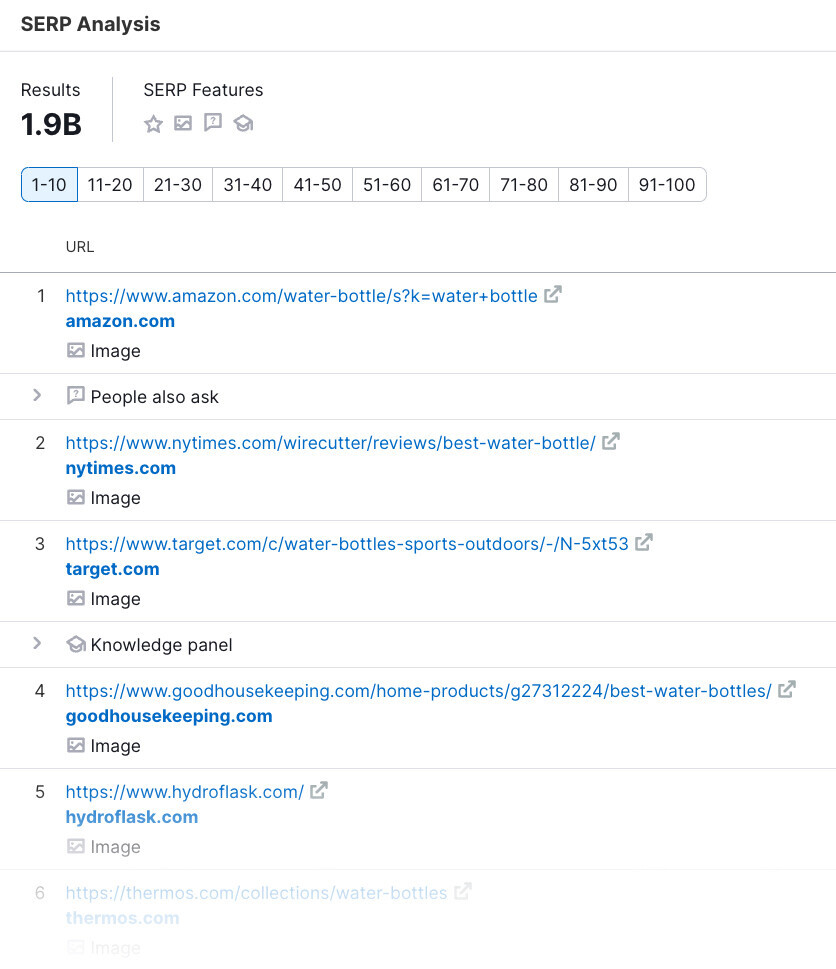
This will help you understand how people talk about products or services. And how to present your business to get noticed.
Use Market Explorer to Conduct Competitor Research
Say Google Trends and Keyword Overview have shown there’s interest in your idea. The next step is to get validation from potential customers and conduct competitor and market research.
Using Market Explorer, you can analyze a market or niche and get audience insights.
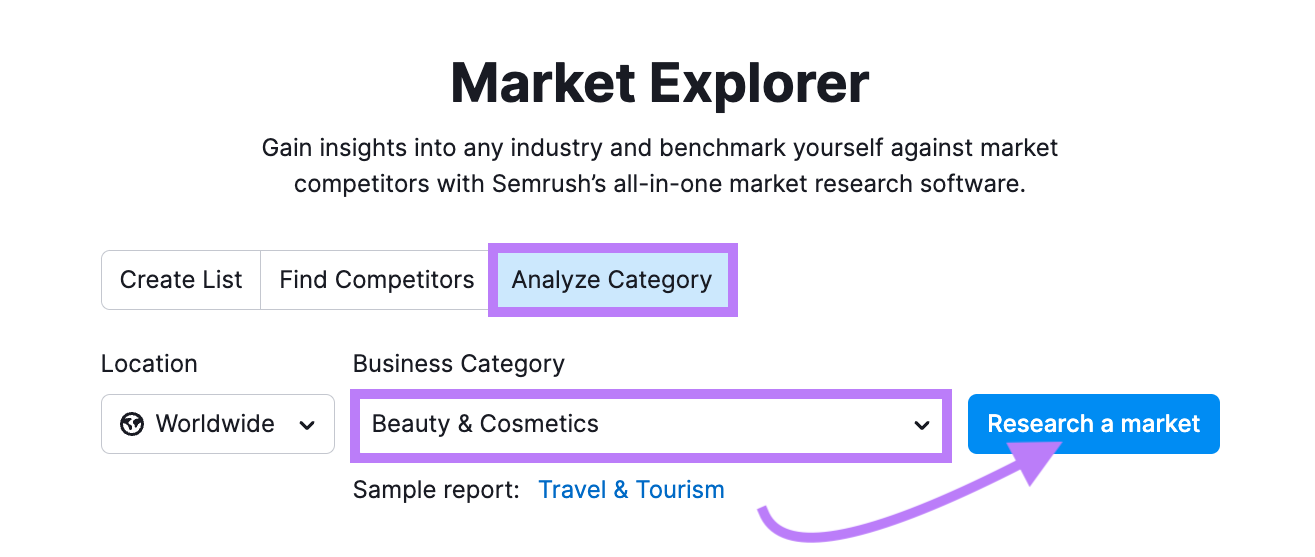
Click “Analyze Category,” choose your business category from the dropdown, then click “Research a market.”
The tool will return information on the industry’s biggest websites, the market distribution in each demographic, and trends over time.
The “Audience” tab can also show you information on the main demographic for that category, helping inform your marketing efforts.
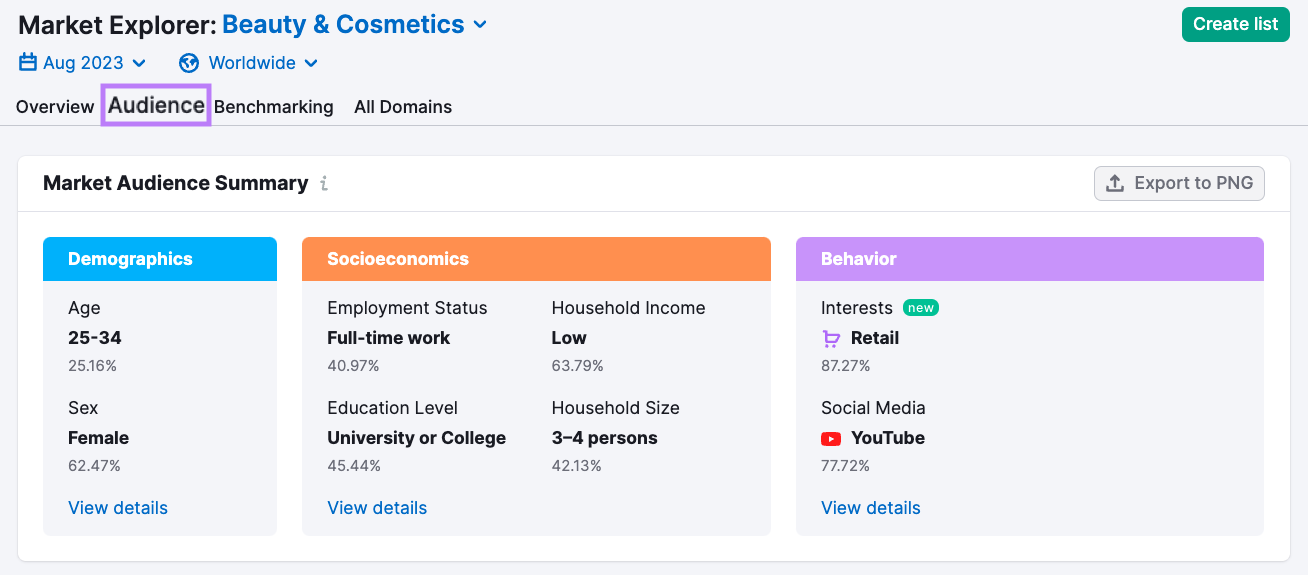
Note: If you have an existing audience, you can create a survey using Google Forms to find out what they want and expect from a product, from color and features to pricing.
Finally, use all of the information you’ve gathered to compare your idea to industry competitors. This will help ensure your product is competitive and will stand out to your target audience.
Turn Your Ecommerce Business Idea Into Reality
The best ecommerce business ideas let you monetize your existing skills and interests—but you don’t necessarily need lots of upfront cash to get them up and running.
If you have ecommerce ideas you’re passionate about, use Semrush to validate them, analyze competitors, and get marketing insights to grow your business.
Get started by researching your competitors today with Market Explorer.
Source link : Semrush.com
